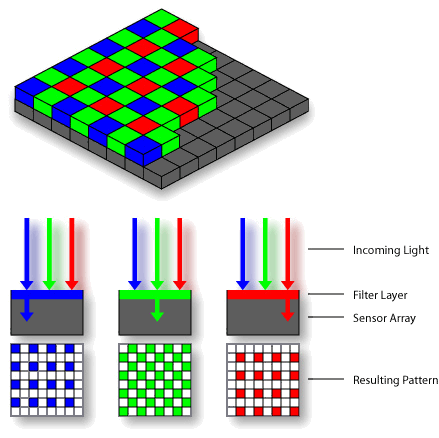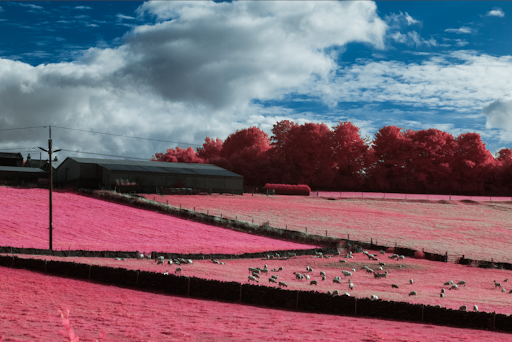Aerochrome, or Kodak Ektachrome Infrared is the most sought after expired film stock on the planet. Prices regularly run up to $200 per single roll on eBay, with no guarantee of the film even being in a usable state.

While I love the striking colours and otherworldly look of this legendary film stock, I am also a realist. I will never shoot aerochrome film due to the extreme price. For context, converting an old digital camera to infrared cost £120 vs £180 for a single roll of aerochrome. Instead, I have been working on the processing and handling of digital files that capture the same information.
Aerochrome is strongly sensitive to blue light. It also has layers that are individually sensitive to green, red and infrared light. By using a blue blocking filter, usually a Wratten #12 Yellow or a Wratten #22 Orange, you could block the blue light which was the recommended way to shoot this film.
Making infrared photos – film vs digital
With an infrared converted digital camera, simply blocking the blue light is not enough. This would in theory lead to only collecting the green, red and infrared wavelengths required but there are a few key differences between digital and film.
Aerochrome on Film
In Aerochrome film (and all other colour films), the colour forming layers are ordered top to bottom in order of increasing wavelength. Shorter wavelengths are collected first while longer wavelengths will penetrate further.
After each colour sensitive layer is a complementary filter that blocks that light from travelling any further. After the green sensitive layer, a layer of red filtration will prevent those wavelengths to pass through, while allowing the red and infrared to pass on. The same occurs after the red layer, with a blocking layer that only allows infrared wavelengths to pass through.
The end result of these layers is that each colour is relatively pure of contamination from other wavelengths of light. There is also some very slight scattering of the longer wavelengths of light as they pass through more material, but these film layers are so thin that this isn’t a problem.
Aerochrome on Digital
In contrast, digital sensors collect all of their light information in a single layer. In fact, bare silicon sensors cannot detect different wavelengths of light at all. Manufacturers do this with a Bayer filter, an array of tiny coloured filters on top of the sensor.

This array causes some of the pixels to selectively detect colours. Then through a process called debayering, an algorithm determines values for neighbouring pixels. This method works for regular colour photography when a camera has an infrared blocking sheet on top of the coloured filters. However, if you remove this sheet, all of the pixels are sensitive to infrared. Using an orange filter alone will lead to infrared contamination across the other colours.
A weak infrared blocking filter in tandem with the orange filter will help. However, it would be even better if there was a filter that only let through green, red and infrared. Luckily, there is a filter just like this! MidOpt make a filter called the TBP550/660/850 that is designed to match the light that aerochrome film is sensitive to. Every photo on this webpage has been shot using this filter. The final piece of the puzzle is any pink filter to reduce the green light. Without this filter it would overwhelm the image and everything would end up blue.

Want to try? Here’s what you need
- Digital camera converted to be sensitive to infrared light
- MidOpt TBP filter (there are cheaper alternatives)
- Weak infrared filter
- Pink filter
- A suitable lens
Next post, I’ll go over how I set up my camera and how I process my images. You don’t get aerochrome straight out of your camera with these filters!
